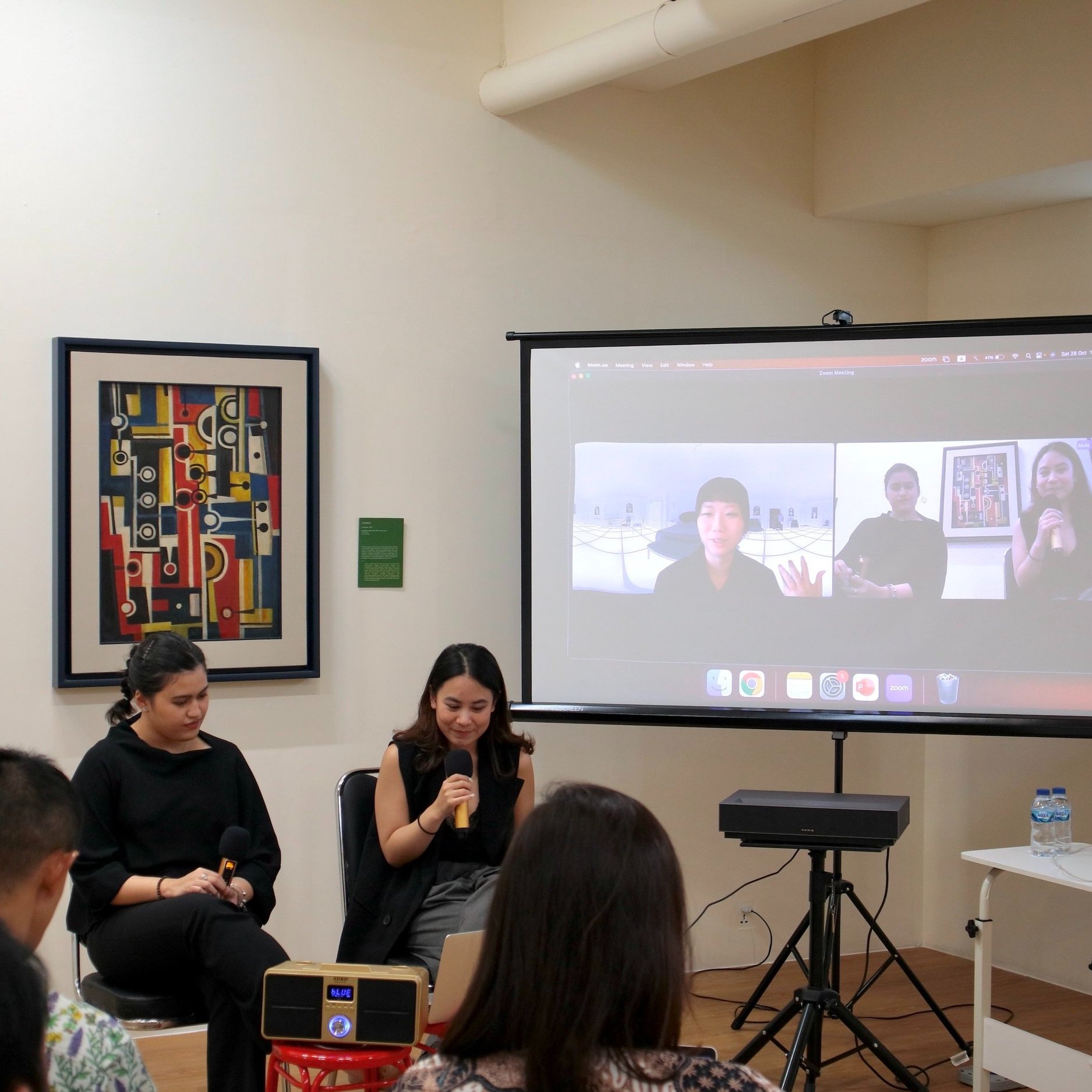LANDING 2023 | Creative Labour: The Good, The Bad and the Question Marks
Berny Tan, Rafi Abdullah, Jennifer Yang
By A&M, with Mesha Gunady
Students from the MA (Arts and Cultural Leadership) programme at NUS attending the panel discussion “Creative Labour: The Good, The Bad and the Question Marks”.
Key points:
Purpose is the main consideration for taking on a project, and remuneration comes a close second.
The participation of private stakeholders, and not only public ones, will be essential for long-term sustainability of the arts ecosystem.
Creative labourers need to continuously represent and market themselves.
Rest is essential, but it is an ongoing practice to actively incorporate it.
Art & Market’s Annual Conference LANDING continued with the second panel discussion titled: “Creative Labour: The Good, The Bad and the Question Marks” on 2 October in LT10 on the National University of Singapore (NUS) campus, in partnership with the MA (Arts and Cultural Entrepreneurship) programme, through Dr Rimi Khan, Senior Lecturer, Department of Communications and New Media, NUS.
This was moderated by Art & Market Editor Nadya Wang, with panelists artist and curator Berny Tan, writer, curator and arts worker Rafi Abdullah and graduate researcher and curator Jennifer Yang. Jennifer Zoomed in from Sydney. In the lively discussion, the panelists talked about being a part of the creative labour force, overcoming challenges and securing opportunities, and what making this career choice sustainable looks like.
Here are the key takeaways from the panel:
Purpose is the main consideration for taking on a project, and remuneration comes a close second. Remuneration is important, but all three panelists agreed that it is not the first factor for considering a project. Berny and Jennifer acknowledged the privilege afforded by family support which allows them to be freelance workers. For Jennifer, personal interests are a source of motivation when juggling multiple projects. Rafi reflected on how he has learnt to negotiate offers and become confident to say “no”. Today, his decision-making process depends on the alignment of the project’s goals with his vision and that of his collective ToNewEntities. Similarly, Berny thinks about how her curatorial work can advocate for the practices of other artists.
Jennifer speaks about her projects.
The participation of private stakeholders, and not only public ones, will be essential for long-term sustainability of the arts ecosystem. Berny and Rafi spoke about the importance of artist-run spaces such as starch in Singapore, which provide a platform for practitioners to present their first projects. Speaking about her experience curating ‘Recast: Green Zeng and Anthony Chin’, Berny highlighted the intangible benefits she gained, such as access to the community around starch, who generously shared their resources. Nadya stressed the importance of such support networks for learning best practices and for developing one’s portfolio.
It is necessary to expand the sources of private funding and support beyond grant structures. This could include employers who give creative labourers the space to pursue projects outside of their day jobs. Rafi spoke about being the curatorial lead at TheUpsideSpace, which provides a regular source of income while affording him the freedom to organise independent ventures. Jennifer said that working with John Cruthers, Director, 16albermarle Project Space, on ‘Our Grandfather Road’ (2021) opened new pathways for her when she was a fresh graduate. She added that such partnerships with emerging practitioners could be seen as mutually beneficial opportunities.
Creative labourers need to continuously represent and market themselves. Berny has a clear understanding of the multiple hats she wears, though it remains a challenge to articulate them. Jennifer finds it necessary to reduce her practice to “an elevator pitch” to appeal to others at times. That said, she finds joy in connecting with like-minded people who share similar passions. Nadya suggested that one reason for this difficulty is because the concept of creative labour is not as well-defined as compared to other professions. At times, it might appear to be a hobby or a passion project that does not instinctively command fair compensation. Nevertheless, creative work is work.
Rest is essential, but it is an ongoing practice to actively incorporate it. The fluid nature of creative work means that the boundaries between work and rest are amorphous. Berny recognises the need to rest, though it is harder to implement, as she finds herself answering emails throughout the day. Equally, she is not tethered to a desk, and is able to take a break in the middle of the day if she wishes. Similarly, Jennifer spoke about continuing to work while on “holiday”. Rafi demarcates time between employment and his “own work”, with the latter taking place “after hours”. A note that there are several words in inverted commas in this paragraph, as their meanings become uncertain, or need to be redefined in relation to creative labour. They are, in the context of creative labour, question marks.
Rafi Abdullah, Nadya Wang, Berny Tan, Rimi Khan and Audrey Yue.
LANDING 2023 | Creative Labour: The Good, The Bad and the Question Marks.
For more information on LANDING 2023, including upcoming events, please click here.
About the Co-Writer
Mesha Gunady is pursuing an MA (Arts and Cultural Entrepreneurship) at the National University of Singapore. She holds a MA Art Therapy from LASALLE College of the Arts, Singapore. In her professional life, she works with neurodiverse children at the intersection of psychology, arts, and education.

















